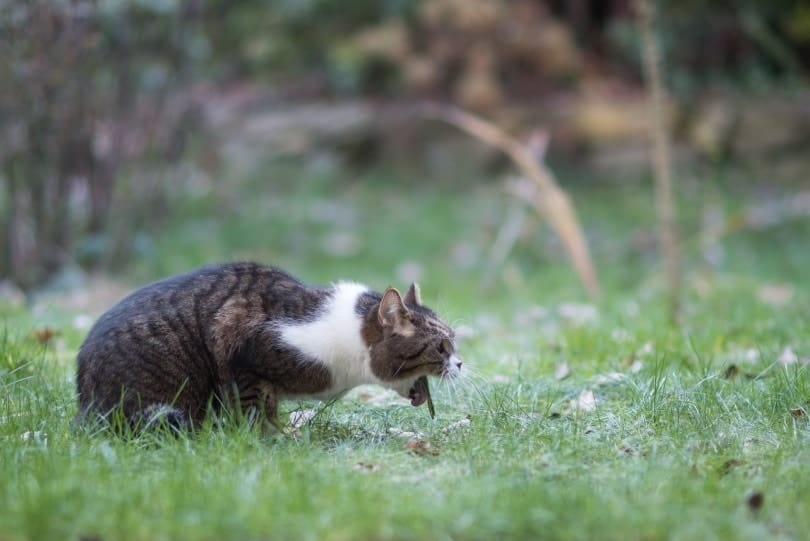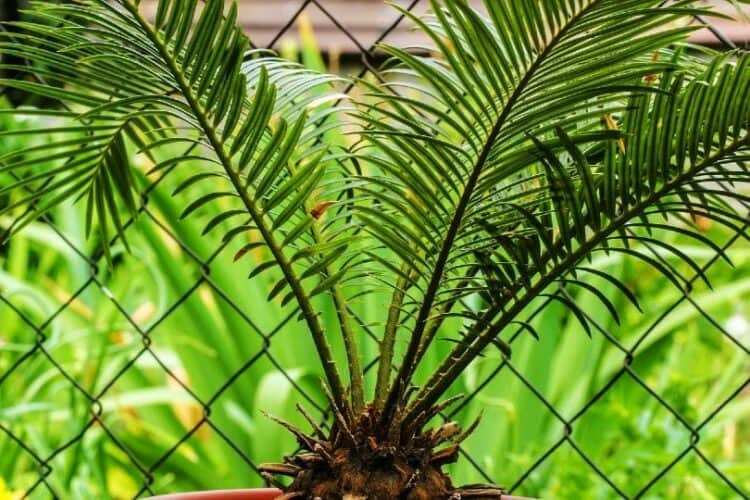It’s not uncommon for cats to nibble on plants indoors and outdoors. While many houseplants, including several common palms, are safe for cats, some can be harmful if ingested. One such plant is the Sago palm tree. The Sago palm contains a toxin that can cause serious health problems in cats. In this blog post, we will discuss the symptoms of palm tree poisoning in cats, how to treat it, and ways to prevent your cat from eating these plants.
Palms That Are Safe For Cats
Before we get started, if you have any of these palms in your home, they’re considered generally safe for cats. These are coincidentally also the most common houseplant palms. If you have one, it’s likely one of these:
- Banana Palm
- Majesty Palm
- Parlor Palm
- Ponytail Palm
Palms That Are Not Safe For Cats
There is one houseplant palm that is dangerous for cats if ingested. The Sago palm tree poisoning is serious and can be fatal if not treated quickly.
- Sago Palm
What Are the Symptoms of a Palm Tree Poisoning in Cats?
If your cat ingests a Sago palm tree leaf or fruit, they may experience the following symptoms: vomiting, diarrhea, drooling, weakness, tremors, and seizures. If you see any of these signs, it’s important to take your cat to the vet immediately.
To reiterate, Sago palm tree poisoning is serious and can be fatal if not treated quickly.

Symptoms of palm tree poisoning in cats can include:
- Vomiting
- Diarrhea
- Drooling
- Weakness
- Tremors
- Seizures
- Depression
- Lethargy
If you see any of these signs, it’s important to take your cat to the vet immediately. Palm tree poisoning is serious and can be fatal if not treated quickly.
How Do I Know If My Cat Has Eaten A Palm Tree Plant or Fruit?
If you see your cat nibbling on a Sago palm tree plant, it’s important to monitor them closely for any signs of illness. If they begin to vomit, have diarrhea, or start to show any other symptoms listed above, take them to the vet immediately.
You should also bring a sample of the plant with you so the vet can properly diagnose and treat your cat.
If you are not sure if your cat has eaten a palm tree leaf or fruit, but they are exhibiting any strange symptoms, it’s always best to err on the side of caution and take them to the vet. Do not wait to see if the symptoms go away on their own, as this could be fatal.

What Is the Treatment for Palm Tree Poisoning in Cats?
If your cat has eaten a Sago palm tree leaf or fruit, it’s important to take them to the vet immediately. There is no specific antidote for palm tree poisoning, so treatment will be based on symptoms. Your vet may give your cat fluids to prevent dehydration, as well as medication to control vomiting and diarrhea. In severe cases, your cat may need to be hospitalized for supportive care.
Are There Any Ways to Prevent My Cat from Eating Palm Tree Plants Indoors or Outdoors?
The best way to prevent your cat from eating Sago palm tree plants is to keep them out of reach. If you have palm trees in your yard, make sure they are fenced off so your cat can’t get to them.
Indoors, keep Sago palm trees out of reach or in a room that your cat doesn’t have access to. If you have an indoor palm tree that your cat can reach, consider putting a physical barrier around it, like a baby gate.
You should also watch your cat closely when they are outdoors to make sure they are not nibbling on any plants. If you see them starting to chew on a plant, redirect their attention with a toy or treat.
You can also try a commercial pet deterrent spray to keep your cat away from plants. Apply the spray to the leaves of the plant and reapply as needed. The sprays give off a smell and taste that cat’s hate, but in some cases, the cat eats the plants anyway. Make sure to observe your cat until you know how they react to the spray.
Finally, you can add sticky pads to the areas surrounding your plant. Your cat will not like the sticky tape sticking to their fur, so they’ll avoid the area.
Conclusion
If you think your cat has ingested a Sago palm tree leaf or fruit, it’s important to take them to the vet immediately. There is no specific antidote for palm tree poisoning, so treatment will be based on symptoms. Your vet may give your cat fluids to prevent dehydration, as well as medication to control vomiting and diarrhea. In severe cases, your cat may need to be hospitalized for supportive care.
Featured Image Credit: Pixabay
















